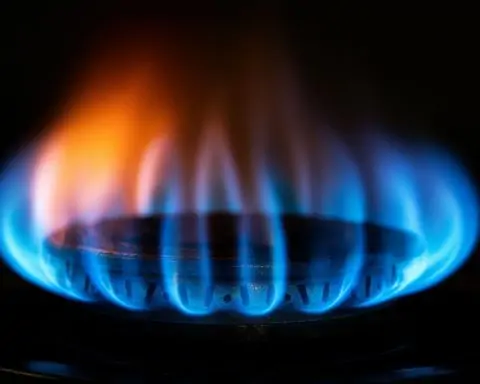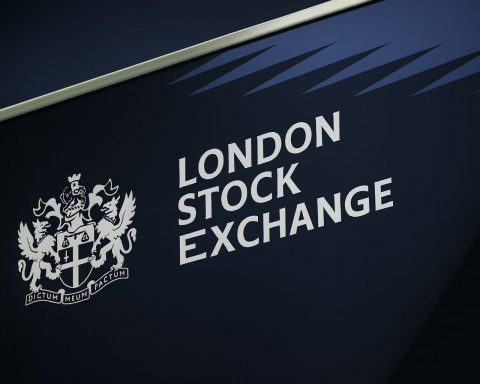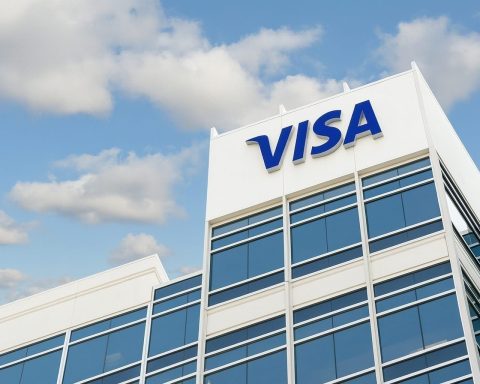- As of 2025, about 83% of Bosnia and Herzegovina’s population uses the Internet.
- 4G/LTE networks reach roughly 94% of the population, served by BH Telecom (BH Mobile), M:tel, and HT Eronet.
- 5G is not commercially deployed in 2025, with authorities predicting spectrum auctions may occur in 2025–2026 after regulatory delays.
- Fixed broadband shares (2023) are DSL around 50.1%, Cable about 29.8%, Fiber (FTTx) about 12.6%, Fixed Wireless about 7.2%, and Leased lines about 0.2%.
- FTTH fiber coverage reaches less than 10% of households, one of the lowest fiber coverage rates in Europe.
- Starlink is set to enter Bosnia in 2025, with an April 2025 ministerial meeting confirming interest and upfront equipment costs around €350–€450 and monthly plans starting near €50–€100.
- By end-2023, mobile subscriptions exceeded 2.2 million.
- In 2023, average fixed broadband download speed was about 28.5 Mbps and mobile 4G download speed around 22–23 Mbps, with latency ~30–50 ms.
- Urban and rural internet usage are closely matched, with about 84% of urban residents and 83% of rural residents online.
- Major ISPs and market shares include BH Telecom with ~27% fixed broadband and 42.3% mobile, M:tel with ~30% fixed and 36.2% mobile, HT Mostar with ~11% fixed and 21.1% mobile, and Telemach with ~17% fixed.
Bosnia and Herzegovina’s internet landscape in 2025 is full of contradictions. On one hand, more people than ever are online – roughly 83% of the population uses the internet [1] – and mobile broadband coverage reaches almost the entire country. On the other hand, the fixed broadband infrastructure still lags behind regional standards, with fiber availability shockingly low and next-generation mobile technology (5G) yet to arrive. This comprehensive report breaks down the current state of internet access in Bosnia and Herzegovina across all major dimensions: infrastructure (from old DSL lines to nascent fiber and 4G mobile networks), key service providers and their market shares, pricing and affordability, speed and performance metrics, urban vs. rural access, the emerging role of satellite internet (e.g. Starlink), government policies, and recent connectivity trends.
Internet Infrastructure Overview
Bosnia and Herzegovina’s internet infrastructure is a mix of legacy systems and modern upgrades. Fixed broadband relies heavily on older technologies, while mobile networks have become the de facto gateway for many users. Below we examine the main infrastructure components – fixed broadband (DSL, cable, fiber, wireless), the mobile network (3G/4G, and future 5G), and the satellite coverage that’s on the horizon.
Fixed Broadband: DSL, Cable, and Fiber Backbone
Fixed broadband in Bosnia and Herzegovina is still dominated by digital subscriber line (DSL) connections over traditional phone lines. As of the end of 2023, DSL accounted for about 50% of all fixed broadband subscriptions [2]. Cable broadband (coaxial cable networks offered primarily by cable TV providers) makes up roughly 30% of connections [3]. Fiber-to-the-home (FTTH), despite its superior speed, is only beginning to gain a foothold – just ~12.6% of fixed broadband subscriptions are over fiber links [4]. The remainder comes from fixed wireless access (around 7%) and a tiny fraction of leased lines for businesses [5]. The table below summarizes the breakdown by technology:
| Fixed Broadband Technology | Share of Connections (2023) [6] |
|---|---|
| DSL (over telephone lines) | ~50.1% |
| Cable (coaxial networks) | ~29.8% |
| Fiber (FTTx) | ~12.6% |
| Fixed Wireless (FWA) | ~7.2% |
| Leased lines & Other | ~0.2% |
Coverage and availability: One striking gap is in fiber optic coverage. Industry data indicates that FTTH networks reach less than 10% of households in Bosnia [7] – one of the lowest fiber coverage rates in Europe. This means most homes, especially in smaller towns and rural areas, cannot even subscribe to fiber service yet. The flip side is that in areas where fiber is offered (primarily larger cities), customer uptake is high [8], showing a strong demand for faster internet. DSL and cable networks cover most urban and suburban areas, but their performance is limited by aging infrastructure (older copper lines for DSL and limited node capacity for cable). In many rural or remote areas, fixed wireless (point-to-point radio links or Wi-Fi based ISPs) have been deployed to extend connectivity where running cables isn’t feasible. Traditional satellite internet was historically available but prohibitively expensive and with very few users (practically negligible usage in the national stats [9]).
Mobile Networks: 4G Dominance and 5G Delays
Mobile broadband has become a crucial part of Bosnia’s internet access. The country has three main mobile operators – BH Telecom (with its BH Mobile division), M:tel (Telekom Srpske), and HT Eronet – which together cover virtually the entire population with 3G/4G service [10] [11]. 4G/LTE networks now reach about 94% of the population [12] after a relatively recent rollout. (Bosnia was late to 4G: licenses were only awarded in 2019 [13], so widespread 4G activation is just a few years old.) For many Bosnians, especially the younger demographic and those in rural areas, mobile data is the primary way to get online. Mobile internet subscriptions (via smartphones and mobile routers) have surpassed 2.2 million by end of 2023 [14] – a figure that dwarfs the number of fixed broadband lines.
However, Bosnia and Herzegovina is notably behind on 5G deployment. No 5G network is commercially available yet as of 2025 [15]. The regulatory and infrastructure groundwork for 5G has faced delays – the government aimed to free up spectrum by end of 2023 and start licensing in 2024, but these goals were not met due to the lack of a clear regulatory framework [16]. In fact, 4G became widespread only “relatively recently,” and the country has been cautious about moving to 5G [17]. Current expectations (per telecom authorities) are that 5G spectrum auctions may happen by 2025–2026, meaning Bosnia could be one of the last countries in the region to launch 5G services [18]. Meanwhile, the existing 4G networks carry the load – and they perform decently, with average mobile download speeds around 22–23 Mbps observed in 2023 [19]. While this is sufficient for basic broadband needs, it falls short of the high speeds and low latency that 5G would offer.
Satellite Internet: On the Horizon
Historically, satellite internet has played a minimal role in Bosnia’s connectivity, mainly due to high costs and latency of older satellite services. That could change soon. Starlink, SpaceX’s satellite broadband service, has set its sights on Bosnia and Herzegovina and is expected to launch operations in the country in 2025 [20] [21]. In April 2025, Bosnia’s Minister of Communications and Transport met with Starlink representatives, confirming mutual interest in bringing Starlink’s satellite internet service to BiH “as soon as possible.” [22] The necessary regulatory approvals are being worked out to allow Starlink to enter the market. This development is especially promising for remote and rural areas where terrestrial broadband infrastructure is lacking – satellites can beam high-speed internet to mountain villages or isolated communities that currently have poor service.
That said, cost-effectiveness is a question. Starlink’s service, while high-speed (users in neighboring countries report 100+ Mbps downlink), comes with a hefty price tag for local standards. The user must purchase a satellite kit (dish and router) which is expected to cost on the order of a few hundred Euros upfront, and monthly subscriptions are projected to start around €50 (≈100 BAM) or more [23]. This is significantly more expensive than typical fixed broadband or mobile data plans in Bosnia. For context, €50 is about 8–10% of an average Bosnian monthly net salary, whereas standard internet packages take up a much smaller income share. Thus, while Starlink can be a game-changer for connectivity in underserved areas (bringing speeds of 100 Mbps to places that never had broadband), it may remain a niche solution unless prices adjust or subsidies are offered. Nonetheless, the government sees potential in satellite internet for initiatives like e-governance, telemedicine, and emergency communications in disaster response [24].
Key Internet Service Providers and Market Share
Bosnia and Herzegovina’s telecom market is served by a mix of incumbent operators and alternative ISPs. The sector has roots in the country’s unique post-war structure – networks were historically split by region – but competition is increasing. Three large telecom companies dominate both fixed and mobile markets, corresponding to the country’s ethnic and entity divisions, and a few significant alternative providers have emerged:
- BH Telecom – Based in Sarajevo and majority state-owned by the Federation government, BH Telecom is the largest telecom operator. Through its BH Mobile arm, it leads the mobile sector with about 42.3% of mobile subscribers as of end 2022 [25]. It also provides fixed broadband (DSL and some fiber under the brand “BHnet”), especially in Bosniak-majority areas. BH Telecom has traditionally been the fixed-line incumbent in half the country and remains a top internet provider (controlling roughly a quarter of fixed broadband lines).
- M:tel (Telekom Srpske) – Based in Banja Luka and operating across Republika Srpska (and increasingly in the Federation), M:tel is the second major player. It is majority-owned by Telekom Srbija. M:tel had about 36.2% of mobile users in 2022 [26] and has been expanding steadily, even beyond the RS entity. It offers DSL, fiber, and cable services (after acquiring smaller cable operators). In fact, data suggests M:tel now slightly edges BH Telecom in fixed broadband market share (around 30% of lines, the largest single share) [27]. M:tel’s acquisitions of local ISPs (like the cable provider Blicnet and others under the brand “Supernova”) have made it a diversified provider of phone, internet, and TV.
- HT Mostar (HT Eronet) – Based in Mostar, this is the third mobile network operator, serving primarily Croat-majority areas. It’s partly owned by Croatia’s Hrvatski Telekom. HT Eronet held about 21.1% of mobile subscribers in 2022 [28]. Its share of fixed broadband is smaller (roughly 11% of lines [29]), since its footprint is regional. Still, HT provides DSL and some fiber in its areas and has loyal customers in the southwest part of the country.
- Telemach (United Group) – Telemach has emerged as the leading cable broadband provider and the largest alternative fixed-line operator in Bosnia [30]. Part of the regional United Group, Telemach offers cable internet, cable TV, and fiber in several cities. It controls about 17% of fixed broadband connections [31], making it the fourth-largest ISP. Telemach’s presence introduced more competition, as it bundles TV, broadband, and phone (triple-play) and has been upgrading cable networks for higher speeds. Notably, Telemach is owned by international investors (BC Partners, since acquiring it from KKR in 2019) [32], injecting foreign capital into Bosnia’s broadband sector.
- Other ISPs – Beyond these big four, Bosnia has dozens of smaller ISPs (the regulator had 63 licensed ISPs in 2023 [33]). Many are local wireless ISPs or niche fiber providers. One noteworthy mention is Blicnet (a Banja Luka-based cable ISP) which had around 5% market share [34] before being integrated under M:tel. ISPs like Logosoft (in Sarajevo) or TELRAD (in Bijeljina) serve specific cities or business clients. Additionally, there are a number of Mobile Virtual Network Operators (MVNOs) – six MVNOs were active by end of 2022 [35] – which resell mobile data/services, though their subscriber numbers are relatively small.
To summarize the landscape, the table below shows approximate market shares:
| Provider | Fixed Broadband Share [36] | Mobile Subscribers Share [37] |
|---|---|---|
| BH Telecom (BHnet/Mobile) | ~27% (fixed lines) | 42.3% (mobile) |
| M:tel (Telekom Srpske) | ~30% (fixed lines) | 36.2% (mobile) |
| HT Mostar (Eronet) | ~11% (fixed lines) | 21.1% (mobile) |
| Telemach (cable/fiber) | ~17% (fixed lines) | – (no mobile network) |
| Other providers (combined) | ~15% (fixed lines) | ~0.4% (MVNOs etc.) |
(Note: Fixed broadband shares are estimated from ASN-level data and reports [38]; mobile shares are official 2022 year-end figures [39].)
Despite being one of the least developed telecom markets in Central/Eastern Europe, Bosnia’s market shows signs of growth and competition [40]. The dominant operators still have majority control, but alternatives like Telemach have made inroads. The environment is shaped by regulatory decisions (e.g., spectrum awards, liberalization efforts) and the push to modernize networks, which we will discuss in later sections.
Pricing Models and Affordability
In comparison to Western Europe, internet service in Bosnia and Herzegovina is relatively affordable – and pricing is often cited as a barrier less frequently than coverage or speed is. According to the Internet Society’s analysis, a basic mobile or fixed broadband package in Bosnia costs about 1.39% of average gross national income (GNI) per capita [41], well below the 2% threshold often used to define affordability. This suggests that for those with coverage, internet prices are generally within reach of many households, though there are important nuances between residential vs. business plans and urban vs. rural affordability.
Residential broadband pricing: Most ISPs offer tiered packages. At the low end, DSL plans with modest speeds (e.g. 10–20 Mbps) or limited cable plans might cost around 30–40 BAM (Bosnian Marks) per month. Mid-range plans in the 50–100 Mbps range typically fall in the 50–70 BAM (~$30–40) per month bracket. For example, crowdsourced data puts the average monthly price of a 60 Mbps unlimited home internet plan at about 47.5 BAM (≈ $27) [42]. The range can span from ~35 BAM for slower packages up to ~70 BAM for the fastest options in some areas [43]. Fiber plans (where available) often offer higher speeds (200 Mbps or even 500 Mbps) at the upper end of the price range. It’s worth noting that many urban consumers get their internet as part of a “triple-play” bundle (Internet + TV + phone) from providers like Telemach or M:tel’s Supernova, which can offer discounts but also push the bill into the 80–100 BAM range for a full suite of services (e.g. premium TV channels, landline, and unlimited internet).
Mobile data pricing: Mobile operators in Bosnia typically offer both prepaid and postpaid plans with data bundles. Prices have been dropping as 4G adoption increases. A prepaid package with, say, 10 GB of data (valid for 30 days) costs on the order of 30–35 BAM [44]. Postpaid smartphone plans often include unlimited voice/SMS plus a data allowance (e.g. 20–30 GB) for around 25–50 BAM monthly, depending on the operator and promotions. For heavy data users, some carriers offer larger packages or even “unlimited” data options, but with speed throttling after a threshold. Compared to average income, these mobile plans are quite affordable – indeed, a standard mobile plan with calls and ~10GB data runs ~32 BAM on average [45], which is accessible to the middle-class consumer (and far cheaper than, for instance, the cost of similar data in many other countries).
Business and enterprise pricing: Dedicated internet connections for businesses (such as SLA-backed fiber lines or leased lines) are available but at significantly higher cost. A business might pay several hundred BAM per month for a guaranteed high-speed connection or for symmetrical bandwidth. Many SMEs in Bosnia, however, simply use regular consumer-grade broadband or mobile routers if budgets are tight. ISPs do have “business offers” – for example, BH Telecom and M:tel market corporate fiber packages with added services (static IPs, web hosting, etc.). Price-wise, Bosnia’s businesses benefit from generally low telecom prices in the region, but the quality (uptime, latency) of infrastructure can be a concern, which is why larger companies sometimes invest in multiple redundant links (e.g., a fiber line plus a 4G backup).
In summary, for residential users, internet access in Bosnia is relatively affordable by regional standards. The country’s pricing for entry-level broadband is cheaper (in absolute terms) than in many EU countries, and relative to income it meets global affordability benchmarks [46]. The key challenge remains not price but infrastructure: you can’t buy high-speed internet if your neighborhood isn’t wired for it. Thus, even at affordable prices, some rural households are limited to expensive cellular data or have no broadband at all – a gap that ongoing investments aim to close.
Speed and Performance Metrics
How fast is the internet in Bosnia and Herzegovina? The answer in 2025 is “not as fast as you’d hope, but slowly improving.” Measured speeds show Bosnia lagging behind European averages, although the spread of fiber and 4G is inching the numbers upward.
Average and median speeds: On fixed broadband connections, Bosnian users saw an average download speed around 28.5 Mbps in 2023 [47]. The median is in the same ballpark (Statista recorded ~29.1 Mbps median in late 2023). Upload speeds for fixed lines are typically much lower (since DSL and cable are asymmetric), often under 10 Mbps for many users, except those on fiber. Mobile network speeds averaged about 22–23 Mbps download in 2023 [48] on 4G, with uploads around 10 Mbps and latency roughly 30-50 ms on 4G networks. These figures represent a huge improvement over the dial-up and early-ADSL era, but they pale in comparison to Western Europe where fiber is widespread.
To put Bosnia’s speeds in context, consider that in Europe’s Speedtest rankings, even the slowest EU countries (like Greece) average ~36 Mbps download on broadband [49], while leading countries (like Spain, Sweden) exceed 100 Mbps. Bosnia’s ~28 Mbps average is below Greece’s, making it likely one of the slowest in the region in terms of fixed broadband speed. The disparity is largely because only a small fraction of Bosnians have access to fiber or very high-speed cable – many are still on legacy DSL lines that top out at 10 or 20 Mbps. The regional average in Eastern Europe is pulled up by countries like Romania or Hungary with extensive fiber; Bosnia thus significantly trails the regional average speed. On mobile, Bosnia’s ~22 Mbps download is also behind the global mobile average. For instance, neighboring Croatia and Serbia have deployed more advanced 4G upgrades and are testing 5G, which gives them a speed edge (opensignal recorded Serbia’s 4G download average around 33 Mbps in 2022, for example). Bosnia’s delay in 4G rollout (only after 2019) means its mobile network experience is a bit dated, though still sufficient for streaming video, social media, and other common uses.
Urban vs. rural performance: In cities like Sarajevo, Banja Luka, or Mostar, users who have access to cable or fiber can enjoy plans of 100 Mbps or more, and many report actual speeds close to advertised. For example, a Sarajevo user on a 100 Mbps cable/fiber plan might test at 90-100 Mbps off-peak [50]. However, in smaller towns or villages, DSL lines might only deliver 5–10 Mbps, and in some underserved spots people rely on 4G wireless routers, getting maybe 20 Mbps on a good day (subject to signal strength and network load). The distribution of fixed broadband speeds published by the regulator shows that about 57% of fixed subscribers have speeds above 30 Mbps, while a sizable minority (~14%) still get by with under 10 Mbps connections (and ~2% suffer with under 2 Mbps) [51] [52]. This underscores a significant speed divide: those with modern infrastructure enjoy a broadband experience not far from the European norms, whereas others are effectively using “basic” broadband by today’s standards.
Comparing to regional averages: It’s informative to compare Bosnia with its neighbors or regional peers. Croatia has seen an aggressive fiber rollout and was early with 4G; its fixed speeds are higher (median ~50–60 Mbps) and Croatia regularly ranks 10–20 places above Bosnia in global speed rankings. Serbia, while also late to 4G and not yet on 5G, has somewhat better fixed broadband speeds in Belgrade and major cities thanks to fiber deployments by Telekom Srbija – Serbia’s median fixed speed was around 40–50 Mbps in 2023. Even Montenegro, a much smaller market, had over 70% fiber coverage and thus far better average speeds [53]. In summary, Bosnia continues to lag behind regional averages in internet speed, both for broadband and mobile. The gap is closing very gradually as older DSL users migrate to fiber or cable and as 4G coverage improved. But without a major acceleration in fiber-to-the-home and the introduction of 5G, Bosnia is likely to remain near the bottom of the European speed charts in the near future.
Internet Access: Urban vs. Rural Penetration
One might assume that Bosnia and Herzegovina has a pronounced digital divide between its cities and countryside, as is common in developing markets. There is a divide in infrastructure, but surprisingly, internet usage rates in urban and rural areas are almost the same. An estimated 84% of urban residents and 83% of rural residents use the internet [54], which suggests that even in villages, a large majority of people are online at least occasionally. This high rural usage is likely thanks to the near-ubiquity of mobile phones and the spread of 3G/4G networks into rural communities. Essentially, even where fixed lines haven’t reached, people often go online via mobile data. The result is a relatively narrow urban-rural gap in basic internet access (only ~1 percentage point difference in usage) [55] – an encouraging statistic that sets Bosnia apart from many countries where rural internet penetration lags far behind urban.
However, this doesn’t mean the urban-rural quality of access is equal. Urban areas enjoy far better connectivity options. For instance, Sarajevo or Tuzla residents can choose between multiple ISPs (DSL, cable, fiber, mobile) and can get high speeds; by contrast, in a small village in Bosanska Krajina, a family might have just one realistic option – a 4G LTE home router or an outdated DSL line – for any internet at all. Broadband penetration (fixed subscriptions per household) is heavily skewed toward cities. Bosnia’s overall fixed broadband subscription rate is about 28.5 per 100 people (28.5%) [56], but this average hides the fact that in well-wired urban neighborhoods it might exceed 60-70% of households, whereas in many rural villages it could be under 10%. In those rural places, the majority rely on mobile devices: they may use smartphones for Facebook, WhatsApp, and YouTube, but not have a wired Wi-Fi router at home.
The government has recognized the need to address rural connectivity. There have been various initiatives and discussions – for example, proposals in the draft Broadband Strategy 2023–2027 to incentivize network expansion into under-served areas [57]. Some local governments and international donors (e.g., through EU development funds or World Bank projects) have funded infrastructure in rural schools, libraries, or administrative offices to improve access. The arrival of satellite options like Starlink in 2025 could further help remote communities, albeit at a higher cost (as discussed earlier). Additionally, the regulator (CRA) operates a Universal Service Fund mechanism intended to subsidize telecommunications in rural/high-cost areas – though the scale of subsidies in recent years has been modest, it has helped install public internet access points and upgrade rural exchanges in a few cases.
In summary, Bosnia’s urban-rural internet penetration gap is surprisingly small in terms of user adoption, which is a testament to how mobile connectivity has reached deep into society [58]. Yet, a qualitative gap persists: urban users enjoy much faster and more reliable connections. Closing this gap will require extending fiber and next-gen wireless into the countryside, something that both the government and operators are gradually working on.
Satellite Internet Availability and Prospects
As noted, satellite internet is set to make its debut in Bosnia and Herzegovina in 2025 with SpaceX’s Starlink service [59]. This marks a new chapter for connectivity in the country. Prior to Starlink, satellite broadband was virtually absent – a few enterprises or affluent individuals might have used legacy VSAT services, but there was no mainstream satellite option due to costs often running in the hundreds of dollars per month for very limited bandwidth.
Starlink’s anticipated impact: Starlink promises high-speed, low-latency internet via satellite, which could be transformative for Bosnia’s mountainous and sparsely populated regions. With thousands of low-earth-orbit satellites, Starlink can deliver tens of Mbps (even 100+ Mbps) to a small dish installed at a user’s home, with latency (~30-50ms) good enough for video calls and streaming. In neighboring countries where Starlink is already active or testing, users report speeds around 100 Mbps down / 10-20 Mbps up, comparable to decent fixed broadband [60]. For Bosnia’s remote villagers, this could be a leap from perhaps 5 Mbps DSL (or no connection at all) to true broadband overnight.
However, there are hurdles. The first is regulatory approval: Starlink needs licenses to operate in-country. The communications minister’s meeting with Starlink reps in April 2025 suggests the government is eager to facilitate entry [61], viewing satellite internet as a strategic asset for things like disaster response and e-government outreach [62]. We can expect that Bosnia will allow Starlink to operate, especially since neighbors (Serbia, Montenegro) are also moving in that direction [63]. The second hurdle is cost, as previously discussed. Starlink is relatively expensive: a one-time equipment cost ~€350-450 for the satellite dish and Wi-Fi router, and monthly plans that could be €50-100+ depending on data tiers [64]. In a country where a basic home internet is under €25, convincing users to pay perhaps 3-4 times more for Starlink will be challenging. Thus, the likely early adopters will be businesses, government institutions, or households in areas with no other options (for them, something like Starlink may be worth the price if it’s the only way to get fast internet).
It’s also worth noting that Starlink isn’t the only satellite constellation out there – but alternatives like OneWeb or Viasat haven’t made any public moves toward the Bosnia market yet. Starlink’s aggressive expansion (already covering much of Europe) makes it the frontrunner. Bosnia could end up as the only country in the Balkans without Starlink if it delays (a local media pointed out that as Serbia and Montenegro get Starlink, Bosnia doesn’t want to be left behind) [65]. This external pressure, plus consumer interest (some tech-savvy Bosnians have already ordered Starlink kits through neighboring countries to use in Bosnia via roaming) [66] [67], means satellite internet will likely become part of the connectivity mix within the next year.
Cost-effectiveness of satellite will improve over time if prices drop. For now, it’s not poised to undercut terrestrial broadband on price; instead, it will serve as a niche high-end solution for those who value connectivity but have no viable alternative. In the longer term, if competition or economies of scale drive down satellite service prices, one could imagine a competitive market where rural users choose between a fixed wireless ISP, a mobile data plan, or a satellite subscription based on what gives the best value and speed.
Government Policies and Regulation
The policy and regulatory environment in Bosnia and Herzegovina’s telecom sector is unique, influenced by the country’s complex governance structure. Telecommunications is overseen at the state level by the Communications Regulatory Agency (CRA or RAK), which regulates both telecom and broadcasting [68] [69]. The CRA is responsible for issuing licenses (e.g., mobile network licenses, ISP registrations), managing spectrum, and enforcing competition and service quality standards. It has been pivotal in initiatives like the introduction of 4G and the planned introduction of 5G.
Key policies and developments:
- 4G/LTE rollout: A major regulatory milestone was the awarding of 4G licenses in April 2019 to the three mobile operators [70]. Bosnia was notably late in doing this (many European countries had 4G by 2010s early), primarily due to regulatory delays and political hurdles in coordinating between the state and entities. Once licenses were granted, the operators moved fast to deploy LTE across the country, achieving high population coverage (~98% penetration of mobile service, and 94% having 4G device access) [71] [72]. The government has since been monitoring operators to ensure they meet coverage obligations (such as covering a certain percentage of roads and rural areas with 4G by specific deadlines).
- 5G roadmap: Bosnia and Herzegovina has not yet implemented 5G, and this is directly tied to policy delays. The CRA and state Ministry of Communications and Transport drafted a Framework Strategy for Broadband Access Development (2021–2025) that included freeing up frequency bands (700 MHz, 3.5 GHz, etc.) for 5G by end of 2023 [73]. However, the strategy missed its deadlines. There is currently no finalized regulatory framework for 5G [74] [75]. Political coordination issues and the lack of a state-level consensus have pushed the timeline back. As of mid-2024, officials hinted that the earliest 5G spectrum auction might be in 2025, with rollout in 2026 [76]. To put this in perspective, by 2025 most European countries have live 5G networks – Bosnia risks falling behind, and the government acknowledges this. They even signed a 5G roadmap MoU for the Western Balkans in 2020 to align with neighbors [77], but national adoption is pending concrete legal decisions.
- Broadband strategy and universal access: The draft Broadband Access Strategy 2023–2027 (mentioned above) is a key policy document aimed at expanding high-speed internet nationwide. Although not yet formally adopted as of 2024 [78], the strategy’s goals include: expanding fiber optic networks (possibly with incentives or public-private partnerships), improving rural broadband (subsidies or support for wireless ISPs and new technologies), and fostering competition. The strategy also aligns with EU digital targets – Bosnia, as an EU candidate country, is encouraged to meet goals like 100% households with 100 Mbps availability by 2025 (a goal it will clearly miss, but is striving toward incrementally). The government has started public consultations on these plans [79], indicating a will to catch up on broadband development.
- Regulatory alignment and reforms: There has been ongoing work to modernize the legal framework for electronic communications. This includes drafting a new Law on Electronic Communications to replace older laws, aiming to incorporate EU regulatory standards (such as those on net neutrality, customer rights, infrastructure sharing, etc.). For example, one analysis by the OSCE noted provisions for a clearer universal service framework in a draft law [80]. Simplifying permits for building telecom infrastructure is another area of reform – to encourage fiber rollout, the state has been looking at reducing red tape for laying cables or building base stations.
- Digital governance and content regulation: While not directly about access, it’s worth noting the government’s stance on internet freedom – currently, there are no significant government restrictions on internet access or routine monitoring of online content, according to reports [81]. This means Bosnia’s regulatory focus is more on the infrastructure side rather than controlling usage. The country also participates in cybersecurity initiatives and has a modest e-government program (though Bosnia’s e-government readiness scores are relatively low at 45% [82], indicating room for improvement in online public services).
- Analog to digital TV transition: A tangential but related policy is the completion of the digital TV broadcasting switchover. Bosnia was very late in shutting down analog TV signals; an addendum to the digitisation project was signed to finally complete it in recent years [83]. This matters for internet access because freeing up the 700 MHz band (used by analog TV) is crucial for future 4G/5G expansion in rural areas (700 MHz band is ideal for wide coverage). By finishing the DTT (digital terrestrial television) project, Bosnia can repurpose those frequencies for mobile broadband, a regulatory move expected to help reach remote areas with 4G/5G signals.
In essence, the government’s policies recognize that improving internet access is key to Bosnia’s development – and there is increasing alignment with European Union digital agendas. The regulatory agency RAK continues to play a central role in pushing the market forward, whether by enabling new entrants (MVNOs, alt ISPs), planning for new technologies, or protecting consumers. The challenge has been the slow pace of policy implementation, often due to the country’s complex political system. But with pressure to not fall too far behind neighbors, Bosnia’s authorities seem determined in the coming years to accelerate broadband development, close urban-rural gaps, and finally get 5G and fiber truly going.
Trends and Recent Developments
The internet landscape in Bosnia and Herzegovina is gradually evolving. Here are some notable trends and recent developments as of 2024–2025:
- Fiber expansion is accelerating: Although fiber connectivity is low in percentage terms, both incumbents and alternative providers have ramped up FTTH rollout in the last couple of years. The share of fiber in fixed broadband connections grew from near zero to over 12% by 2023 [84]. Operators like BH Telecom and M:tel have announced investment plans to replace parts of the copper network with fiber, especially in cities. For example, BH Telecom has been upgrading its core network and started offering FTTH in certain neighborhoods of Sarajevo and Tuzla, while M:tel’s Supernova brand has extended fiber in Banja Luka and Bijeljina. The FTTH Council Europe even hosted a “Balkans Fiber Summit 2024” [85], underlining the region’s focus on catching up in fiber – Bosnia was highlighted as lagging but with high demand where available, which likely will spur further investments.
- Mobile user base changes: The mobile sector is largely saturated in terms of subscription count (with 3.84 million mobile connections for ~3.3 million people – many have dual SIMs) [86]. However, a trend is the shift from prepaid to postpaid and growing data usage. In 2024, the number of postpaid mobile customers rose about 10%, indicating people are opting for monthly plans with data rather than pay-as-you-go [87]. This correlates with more smartphone usage and the need for consistent data allowances. All three operators now heavily promote unlimited or large data plans, reflecting the rising demand for streaming and social media on the go.
- Increased competition and investments: The telecom market has seen more competition with international investment. United Group’s Telemach continues to invest (for instance, they have been rolling out DOCSIS 3.1 and fiber to boost cable speeds, offering packages up to 200–300 Mbps). Telekom Srbija (parent of M:tel) has deep pockets and has been acquiring smaller ISPs to consolidate its market share. Even state-owned BH Telecom, facing these pressures, has diversified into new services (like digital TV, OTT streaming, and even ventures into IoT and smart city solutions) to stay competitive. A recent report noted BH Telecom’s financial upswing – gross profit jumped 37% in 2024 – possibly due to cost-cutting and growth in broadband subscribers and value-added services [88] [89]. Such profits may be reinvested into network improvements (indeed BH Telecom announced it would invest millions into expanding fiber and preparing for 5G when it comes).
- Regional and global integration: Bosnia’s connectivity is also improving via better international links. The country now has multiple high-capacity fiber optic cables linking it to the global internet through Croatia, Serbia, and beyond, improving redundancy. The national Internet Exchange Point (BHNIX) in Sarajevo has been active for several years and is gradually attracting more networks (44 active autonomous networks, with one main IXP) [90] [91], which helps keep local traffic local and speeds up access to popular content. Additionally, more content is being cached within Bosnia – though still only 10% of popular website content is locally cached (versus 73% European average) [92], this is expected to improve as CDNs and big tech set up more servers in the region. All these factors will contribute to better performance and user experience over time.
- Emerging services and digital economy: With more people online, Bosnia’s digital economy is slowly growing. The government is pushing e-government services (online portals for some citizen services are available, though uptake is moderate). Tech entrepreneurship is on the rise, and better internet access is a foundation for that. For instance, IT outsourcing companies operate in Sarajevo and Banja Luka, requiring reliable broadband. There is also a trend of young people in rural areas leveraging internet for remote work or freelancing. If Starlink and further 4G expansion succeed, they could enable more such opportunities outside the big cities.
In conclusion, Bosnia and Herzegovina’s internet access in 2025 is marked by significant improvements but also glaring gaps. The infrastructure is transitioning – slowly – from an outdated state to a more modern one: fiber optics are creeping in, 5G is on the horizon (albeit delayed), and even space-age solutions like Starlink are being embraced. Speeds and services are improving, prices are relatively affordable, and usage is widespread – these are reasons for optimism. At the same time, the country must overcome its structural challenges to avoid being left behind: it needs to expedite policy decisions, invest in high-speed networks, and ensure that no corner of the country is left unconnected. The coming years will be pivotal in determining how quickly Bosnia can bridge the digital divide and catch up with its European peers in the race for fast, accessible internet for all.
Sources: The information in this report is drawn from official regulatory data, telecom industry analyses, and news reports, including the Bosnia and Herzegovina Communications Regulatory Agency (RAK) statistics [93] [94], U.S. government market overview reports [95] [96], Internet Society’s country indicators [97] [98], and reputable news outlets covering telecom developments [99] [100]. These sources provide a comprehensive and up-to-date picture of the state of internet connectivity in Bosnia and Herzegovina as of 2025.
References
1. pulse.internetsociety.org, 2. www.ripe.net, 3. www.ripe.net, 4. www.ripe.net, 5. www.ripe.net, 6. www.ripe.net, 7. www.ftthcouncil.eu, 8. www.ftthcouncil.eu, 9. www.ripe.net, 10. www.trade.gov, 11. www.trade.gov, 12. pulse.internetsociety.org, 13. www.trade.gov, 14. www.ripe.net, 15. cms.law, 16. cms.law, 17. cms.law, 18. www.budde.com.au, 19. pulse.internetsociety.org, 20. seenews.com, 21. sarajevotimes.com, 22. sarajevotimes.com, 23. amilma.digital, 24. sarajevotimes.com, 25. www.trade.gov, 26. www.trade.gov, 27. pulse.internetsociety.org, 28. www.trade.gov, 29. pulse.internetsociety.org, 30. www.trade.gov, 31. pulse.internetsociety.org, 32. www.trade.gov, 33. www.ripe.net, 34. pulse.internetsociety.org, 35. www.trade.gov, 36. pulse.internetsociety.org, 37. www.trade.gov, 38. pulse.internetsociety.org, 39. www.trade.gov, 40. www.trade.gov, 41. pulse.internetsociety.org, 42. www.numbeo.com, 43. www.numbeo.com, 44. www.numbeo.com, 45. www.numbeo.com, 46. pulse.internetsociety.org, 47. pulse.internetsociety.org, 48. pulse.internetsociety.org, 49. www.opensignal.com, 50. www.reddit.com, 51. www.ripe.net, 52. www.ripe.net, 53. www.ftthcouncil.eu, 54. pulse.internetsociety.org, 55. pulse.internetsociety.org, 56. www.theglobaleconomy.com, 57. cms.law, 58. pulse.internetsociety.org, 59. sarajevotimes.com, 60. www.reddit.com, 61. sarajevotimes.com, 62. sarajevotimes.com, 63. sarajevotimes.com, 64. amilma.digital, 65. sarajevotimes.com, 66. www.reddit.com, 67. www.reddit.com, 68. en.wikipedia.org, 69. en.wikipedia.org, 70. www.trade.gov, 71. www.trade.gov, 72. pulse.internetsociety.org, 73. cms.law, 74. cms.law, 75. cms.law, 76. www.budde.com.au, 77. cms.law, 78. cms.law, 79. cms.law, 80. www.osce.org, 81. en.wikipedia.org, 82. pulse.internetsociety.org, 83. www.broadbandtvnews.com, 84. www.ripe.net, 85. www.lwlportal.de, 86. www.telecompaper.com, 87. www.telecompaper.com, 88. www.privacyshield.gov, 89. seenews.com, 90. pulse.internetsociety.org, 91. pulse.internetsociety.org, 92. pulse.internetsociety.org, 93. www.ripe.net, 94. www.ripe.net, 95. www.trade.gov, 96. www.trade.gov, 97. pulse.internetsociety.org, 98. pulse.internetsociety.org, 99. cms.law, 100. sarajevotimes.com










